The Sabi Sand Nature Reserve offers amazing wildlife experiences throughout the year, and it’s still by far the best Big Five reserve in the world. Everything has evolved to adapt to the ecosystem and complete the food chain, naturally inspired by climatic changes. These past few months, animal concentration and movement have increased, allowing for unbelievable game viewing and rare encounters, including an abundance of cheetah and many other predator-prey encounters.
Seasons in the year play an integral role in animal behavior, which is readily witnessed as time passes. Taking a look back, the winter season has been epic, with wonderful wildlife interactions. Some members of the wilderness have successfully bred and reared their young during this time. African wild dogs have been denning during the winter months, and with the bush being less dense and easier to, they were able to successfully raise their puppies with ease.
As per our earlier predictions during autumn, we managed to have great sightings of predators preying on various antelope species during the winter months. One exceptional sighting was of a female cheetah and cub hunting and killing an impala close to our vehicle – a rare occurrence as cheetahs usually hunt in open areas. In this case, it was in an area occupied by small, woody trees, making it a bit challenging for her. Nevertheless, she succeeded. The entire hunt was beautiful and captivating, but a large female hyena managed to steal the carcass before the mother cheetah and her cub could enjoy the kill.


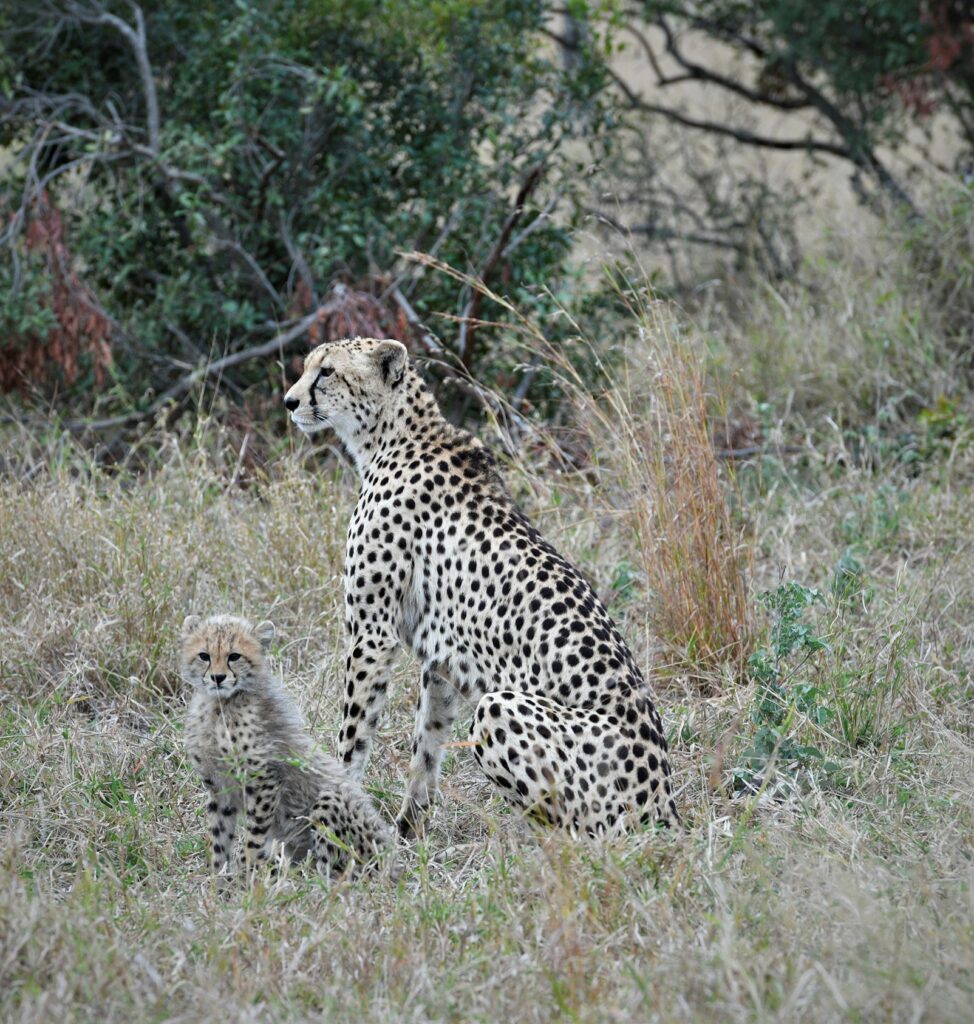
Another impressive winter sighting was witnessing a young male leopard stalking and killing a large chameleon. This is not a common sight, and we were all amazed at his keen hearing abilities. The interesting part is that he heard the chameleon moving through dead foliage about 30 meters away. As we watched, the leopard started moving slowly, with his ears tilted forward and locked onto the target. From our vehicles, we couldn’t see what it was, and we weren’t sure if the leopard could identify it before getting closer. In the end, the leopard approached the target, pounced and made the kill. He then walked another 50 meters before settling down to snack on it – truly amazing!
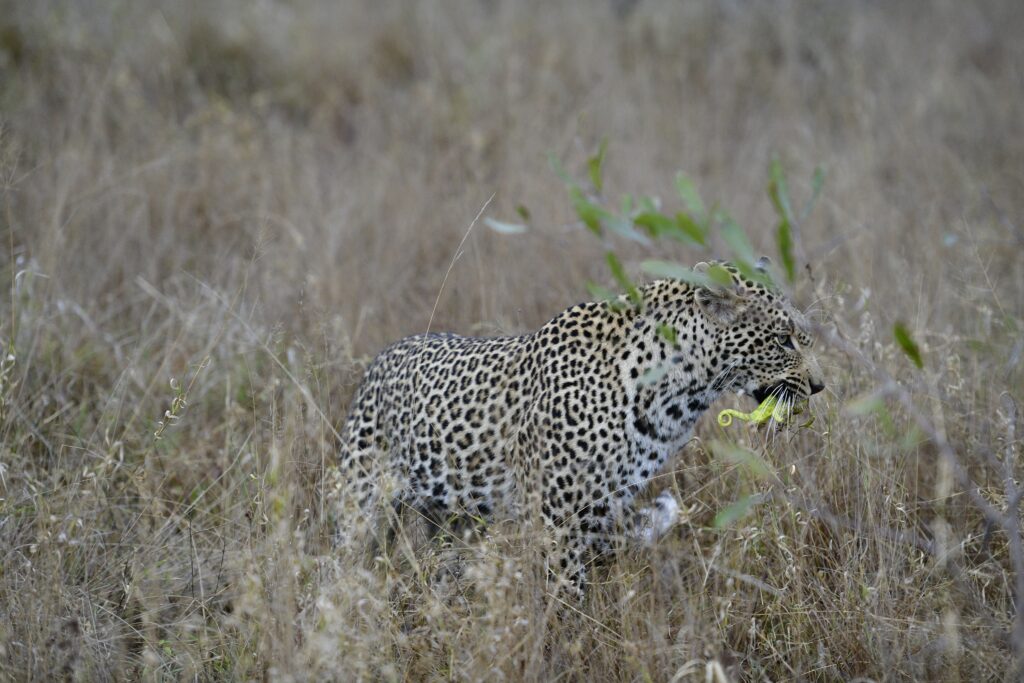
Last month, we had another impressive sighting of a Martial eagle feeding on a baby Steenbok antelope. We heard impala alarming from over a kilometer away while we were watching a female leopard stalking a small group of impalas. The loud snorting sounds caught our attention, and as we approached the scene, we saw the gigantic eagle busy feeding on something on the ground. Since it was winter and the grass was short, we could even see its talons – truly amazing! A few seconds later, the eagle decided to take off and perched in a nearby tree, looking heavily fed. Upon closer inspection, we found it was a small antelope, a little Steenbok, with no signs of bite marks, indicating that the Martial eagle had killed it. Martial eagles are known for killing large lizards, so seeing them kill small antelope like this is rather uncommon!
We were once again fortunate to see another little cub emerging from the hyena den site’s burrow! It appeared to be around three weeks old, still jet black and very adorable. This is in addition to the 5-month-old youngster we already had in the same den. Now, we have two female hyenas sharing the den site, each with one cub. We hope that they will be able to raise their young ones and protect them from the specialist leopard, Molowati, who goes out of his way to hunt and kill young hyenas. Molowati knows that the mother hyena will eventually leave the den site in search of food, and he waits for the opportunity to pounce on the little ones while they are alone. So, more baby hyenas being born in our area is great to see and ensures the balance in the ecosystem as we need hyenas to maintain the food chain.
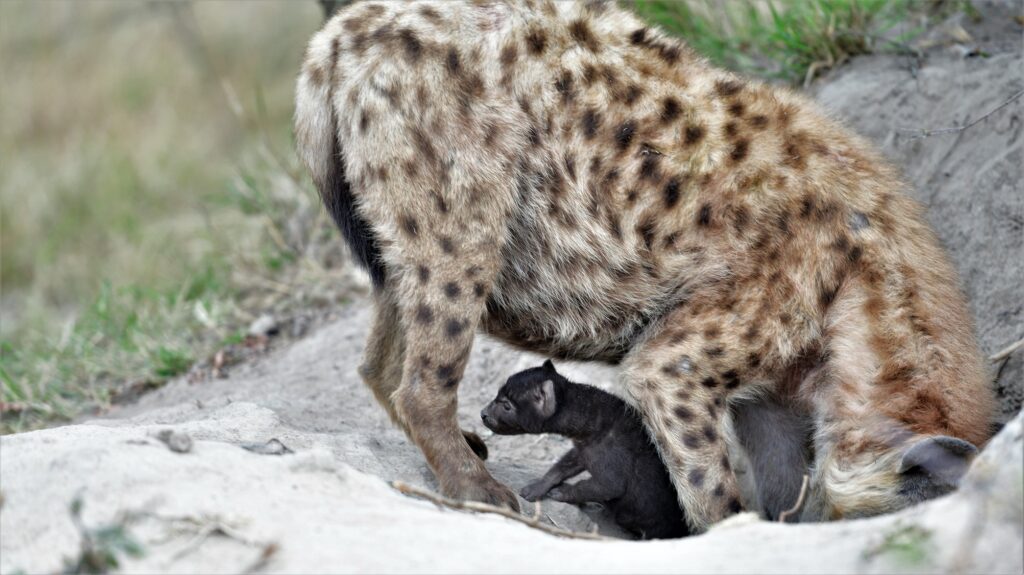


We are expecting the return of many migratory species to our area, although some, like Wahlberg’s eagles, have already arrived. In the Cheetah Plains Reserve, we have two nesting sites for Wahlberg’s eagles, one of which is close to our Buffalo pan. Wahlberg’s nests are built similarly to those of Bateleur eagles, typically in the middle forks of thorny trees. Unlike the nests of White-backed vultures, which are constructed on top of the crown, these eagles position their nests underneath the tree’s crown for weather protection. Breeding partners tend to use the same nest if available, returning each season to the southern African subregions. Families of bee-eaters, rollers, storks, cuckoos, weavers and others are also yet to return during spring so we can soon expect an abundance of colorful birdlife again.

Impalas are expected to start giving birth next month in October, which will be quite interesting! This coincides with our expected first heavy rains. If the rains are delayed, it will directly affect the impala lambing period, as they will have to retain their fetuses longer until there is adequate green pasture for their young ones’ start to life. Impala young are solely dependent on the soft shoots from herbs and grasses in their first few weeks, and they will have morning and afternoon runs to keep fit and ready to escape predators.
We anticipate blossoms from various tree species, including Acacia trees, Sausage trees and others. Sausage trees are already flowering, attracting nectar-eating birds. Flowers not only attract herbivores but also insects, including butterflies, beetles and bees, which in turn attract other insect-eating birds to the same location. This will start to take place once we receive our first summer rains, which will draw many species out of hibernation. Frogs, toads and reptiles will soon emerge and take advantage of any available prey.
Currently, we are experiencing amazing animal sightings in the area. The landscape is wild and dry, with most trees lacking leaves. The small seasonal pools have dried up, leaving only the big dams still filled with water. This means that larger mammalian species are traveling longer distances in search of water, often doing so once or twice a day.
This phenomenon has brought many zebras and wildebeest to the area, as well as an abundance of giraffes. Some herbivores like zebras and buffalos focus on quantity, consuming hard, rigid grasses that require them to drink a lot of water each day. Buffaloes, although ruminants, also consume a substantial amount of roughage daily, necessitating a higher water intake.

All of this movement requires animals to expend a lot of energy walking. When viewed from above, there’s a distinct network of tracks created by wild animals for migration purposes. Animals move in two ways: in a single file or spread out. If animals are moving in a single file, it means they are migrating. If they are moving in one direction but spread out, they are either hunting or feeding. These paths converge towards the waterholes and diverge as they move further away. Many species use these paths, although they’re usually not shared at the same time.
Lions and leopards use these paths to predict the movements of prey. When the animals move in a single file, lions and leopards will quickly run ahead to ambush them, as their movement becomes predictable. Most antelopes have become smarter about this, for example, impalas and other species sometimes position themselves between two waterholes and play the wind direction. If the wind is blowing southward, they will move northward, going against the wind. This tactic helps them detect predators, even in thick vegetation, as most antelopes have an excellent sense of smell. Most antelopes are also likely to approach waterholes once the day warms up, as big cats tend to rest during the warmer hours to avoid elevated body temperatures and increased metabolic rates.
If you are looking for kills, follow predators at night after dark, as there is a high chance of witnessing these animals in action during this season. With antelopes on the move, cats have a greater advantage in their pursuit. Coordinated hunts, often adopted by large lion prides, are also fascinating to observe. Lions spend time analysing the likelihood of their success, arranging and positioning themselves accordingly. If a pride male is present, following behind him is best, as he usually follows the lionesses during hunts, sometimes also looking after the young cubs. It’s best to follow from behind and not obstruct the escape route. The same principle applies when following leopards and wild dogs – we like to keep some distance to avoid becoming part of the hunt.
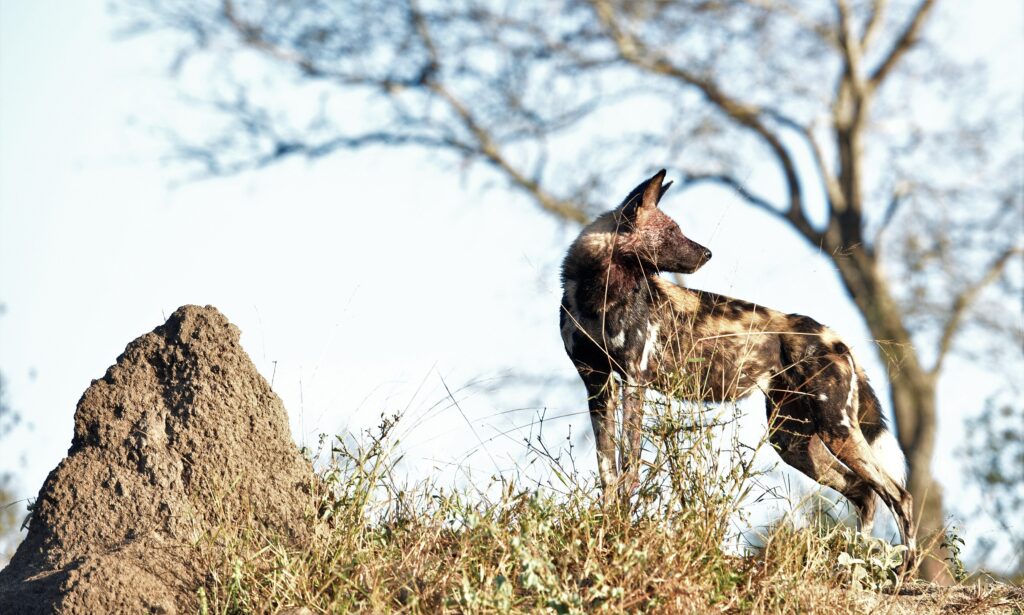
It’s always exciting to see elephants swimming. Elephants are likely to join hippos in the water and play, making this season the best time to witness such interactions. These waterholes are usually inhabited by various species of antelopes and others.
Buffalos and warthogs also visit waterholes on hot days to wallow in the mud. On the other hand, hippos are likely to emerge from the water and bask in the direct sunlight during the heat of the day. As we know, hippos need strong sunlight for their thick leathery skin, and they also require water to keep their skin moisturized. Therefore, they must manage their days carefully. It’s important to note that hippos don’t immerse themselves in the water to escape the sun; they do it to hydrate their skin, as their bodies are not naturally equipped to do so.
Our night drives have been quite interesting lately. We have seen a variety of creatures, including bushbabies, white-tailed mongoose, chameleons, scrub hares, genets, civets, jackals and other smaller creatures, which is always a delight. The night sky has also been much clearer, allowing us to see various constellations and planets. Stargazing is one of the most exciting activities while on safari, as we typically have clear skies due to less pollution in the area.
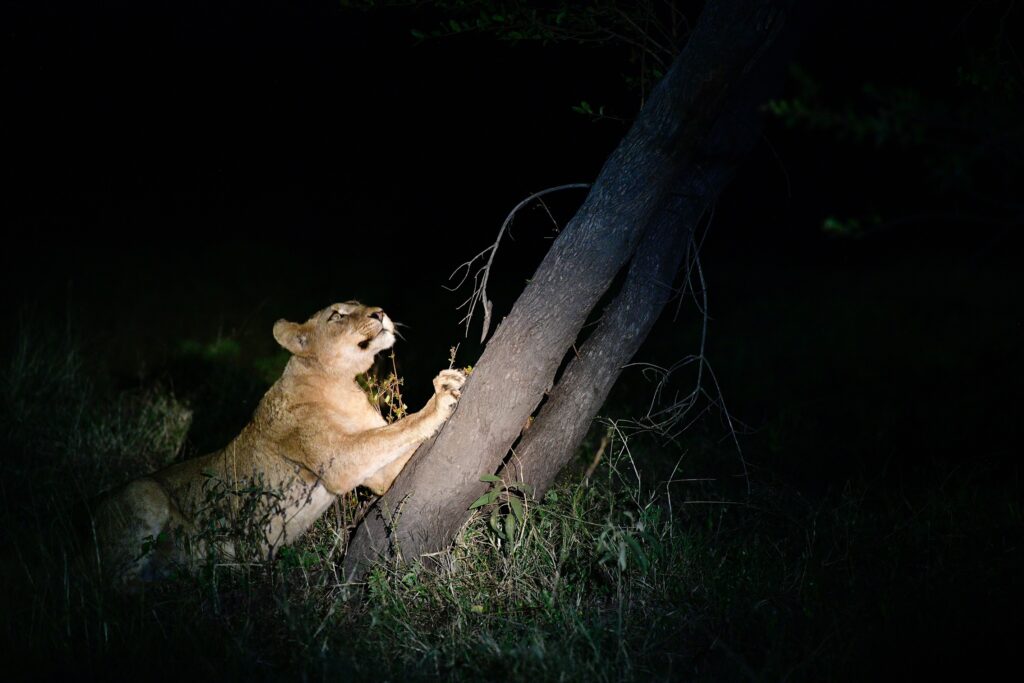


Bushwalks have also been quite productive as with almost no rain, we can clearly see animal tracks and signs in the soft, dusty sand. Tracking game on foot is common, but finding the animals on foot is a different adventure…
With the shift in season, the bush gradually becomes more colourful and vibrant as the increased sunlight and upcoming rain season ignite the natural world, promising to unveil new life and spectacular encounters in the wild.